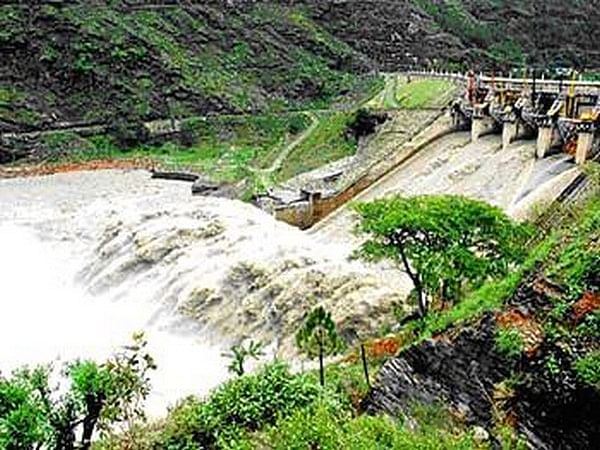Kabul [Afghanistan], October 7 (ANI): Water is one of the main wheels for developing Afghanistan’s economy and bringing the nation out of poverty.
Its free flow must be managed through a proper water management system and approach that can be done by building dams on River Kabul, reported The Khaama Press.
The Kabul River rises in the Hindu Kush mountains and receives substantial flows from several rivers which measures 700 kilometres long, it flows 460 kilometres inside Afghanistan and 240 kilometres in Pakistan.
The river passes through Kabul and is augmented with the Logar river in Shina, the Panjshir river magnifies it in Sorobi, and then it joins Alingar and Kunar rivers in Jalalabad. In Pakistan, it flows through Peshawar, Charsada, and Nowshera cities which finally drain into the Sindh river in Punjab’s Attock district.
Afghanistan has abundant water resources. 80 per cent of such resources come from surface water that flows from snowfields and glaciers in the Hindu Kush and Himalayan mountains.
Afghanistan as an agro-economic oriented country can reach self-sufficiency in food security by managing and utilizing these water resources which flow to its neighbouring countries for free, reported Khaama Press.
Despite ample water resources, Afghanistan has been categorized among the high-risk country in the Water Stress Index which shows that the country is incapable to consume its annual water supplies generated from precipitation, rivers, and groundwater.
In fact, the construction of Dams along the rivers is one of the sustainable approaches to water management in the country, reported Khaama Press.
Years of internal conflicts in the country wasted the opportunity to draw a water management system in Afghanistan in which almost 12 billion cubic meters of the Kabul river flow into Pakistan free of cost every year.
Pakistan benefits from the water flow more than Afghanistan; Pakistan already constructed a number of barrages, irrigation canals, and other infrastructure on its section of the Kabul River. Warsak Dam is a clear example in the Peshawar valley, 20 kms on the northwest of the city, reported Khaama Press.
The international charges for every cubic meter of water start from 0.5 cents to 2 dollars, if we take 1 dollar as an average price, Afghanistan’s water which is worth around 12 billion dollars, irrigates Pakistan’s agricultural land annually without receiving anything in return.
On the other hand, four-fifths of Afghanistan’s population of 38 million depend on farming and horticulture. The recent drought and climate changes have badly damaged the sector, reducing the cultivated area from 10.8 million acres in 1978 to 4.6 million acres in 2002 with further reduction in the recent decade, reported Khaama Press.
More importantly, around six million residents of Kabul and Jalalabad depend on the Kabul river for all their water needs. Indeed, such water can be used for hydropower plants to produce energy as well.
Afghanistan suffers from a severe shortage of electricity which imports 80 per cent of its electricity from its neighbours.
Constructing barrages on the Kabul River is associated with many supremacies, it stores water when precipitation is at its peak, suppresses flood, waters agriculture, and produces competitive, and clean energy reported Khaama Press.
Positively, a significant reduction in surface water, including the flows of Kabul, would seriously threaten Pakistan’s agriculture, which contributes more than a fifth of its GDP and can be used as leverage pressure against the Pakistan government for the national interest. (ANI)
This report is auto-generated from ANI news service. ThePrint holds no responsibility for its content.



